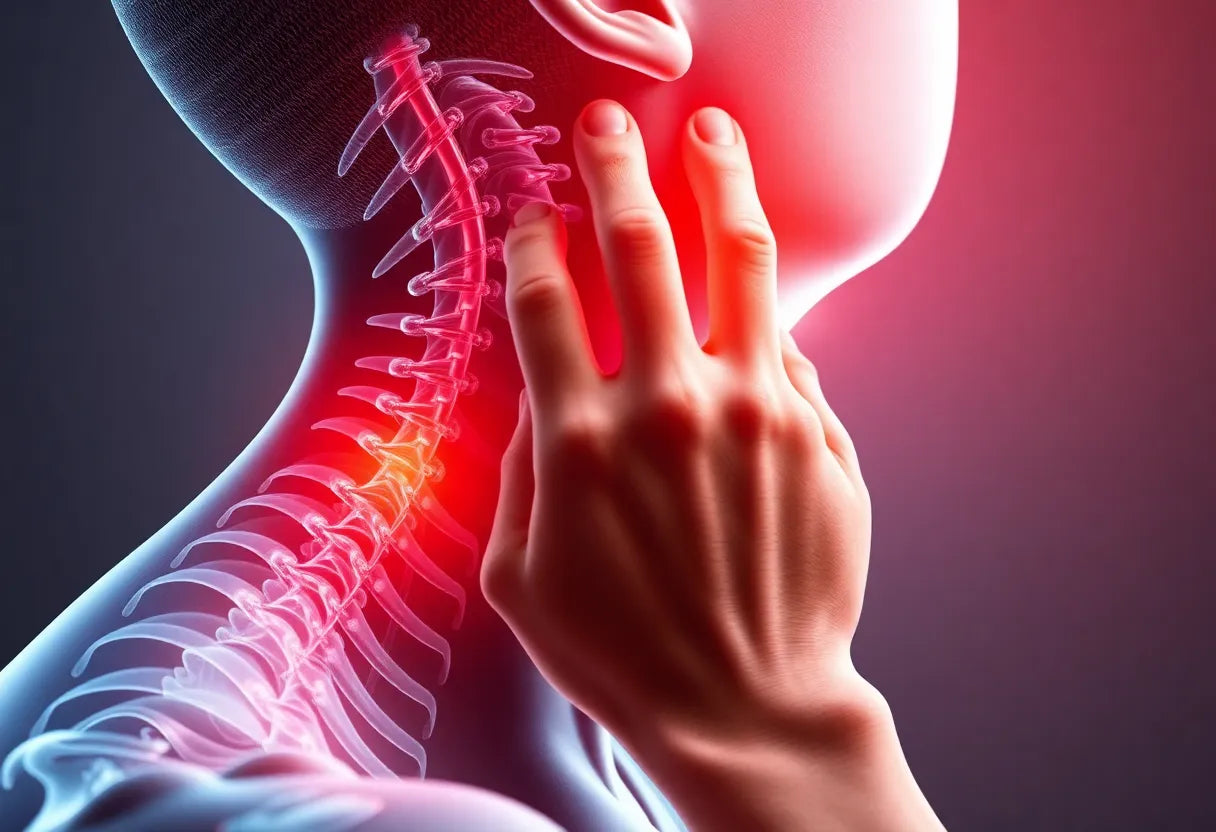Back pain is a common ailment that affects millions of people worldwide, significantly impacting daily activities and overall quality of life. Whether it's the lower back or the upper back, discomfort in these regions can hinder mobility and productivity. Fortunately, incorporating specific exercises into your routine can serve as an effective, non-invasive method to alleviate back pain and improve physical function.
understanding the impact of back pain
Back pain can arise from various causes, including poor posture, muscle strain, or underlying health conditions. It's a condition that doesn't discriminate, affecting both the lower and upper back regions. The consequences of persistent back pain are far-reaching, often leading to decreased physical activity, which can, in turn, exacerbate the condition. This cycle of pain and inactivity can be broken by engaging in targeted exercises designed to strengthen and stabilize the back.
the role of exercise in managing back pain
Exercise plays a pivotal role in managing back pain by improving strength, flexibility, and posture. Targeted exercises can help strengthen the core muscles, which support the spine, and enhance stabilization to prevent future injuries. By incorporating a balanced mix of strength training, stabilization exercises, stretching, and mobility work, individuals can experience significant relief from back pain. This holistic approach not only addresses existing discomfort but also aids in preventing recurrence.
setting the stage for relief with a guided practice
This practice reader serves as a comprehensive guide to discovering effective exercises for back pain relief. Backed by evidence and expert recommendations, it provides a structured approach to pain management through exercise. The exercises outlined in this guide are designed to target various aspects of back pain, ensuring a well-rounded regimen that can be adapted to individual needs. By following these exercises, you can take proactive steps towards managing and alleviating back pain, enhancing your overall well-being and quality of life.
In the following sections, you'll find detailed descriptions and instructions for each exercise, helping you to execute them correctly and safely. These exercises are not only beneficial for relieving pain but also for improving your overall physical health, making them a valuable addition to your daily routine.
combination of techniques for effective back pain relief
Addressing back pain effectively requires a multifaceted approach, combining various exercise techniques that target different aspects of the condition. Strengthening exercises help build muscle support around the spine, while stabilization exercises enhance core strength and balance. Stretching exercises increase flexibility, reducing muscle tension and improving mobility. Finally, mobility exercises promote joint function, ensuring that the spine and surrounding muscles can move freely without discomfort. By integrating these techniques, individuals can create a comprehensive exercise regimen that tackles back pain from all angles.
exercise list and instructions for back pain relief
Below is a curated list of exercises designed to target specific areas of the back, with detailed instructions to ensure proper execution and maximize benefits. These exercises have been selected based on their effectiveness in relieving pain and improving function.
knee-to-chest stretch
This exercise helps elongate and relax the muscles of the lower back, providing immediate relief from tension.
- Lie flat on your back with your knees bent and feet flat on the floor.
- Gently pull one knee towards your chest, keeping the other foot flat on the floor.
- Hold the stretch for 20 seconds, feeling the stretch in your lower back.
- Repeat with the other knee, and then with both knees together if comfortable.
bird-dog
The bird-dog exercise improves core stability and coordination, essential for maintaining a healthy back.
- Start on your hands and knees, ensuring your back is straight and parallel to the floor.
- Extend your right arm forward and your left leg back, keeping them in line with your body.
- Hold this position for 15 seconds, then switch to the opposite arm and leg.
- Repeat the exercise on each side 5 times.
plank
The plank is an excellent exercise for strengthening the abdominals, back extensors, and stabilizers, providing robust support for the spine.
- Lie face down, placing your forearms on the floor with elbows directly under your shoulders.
- Lift your hips and knees off the floor, forming a straight line from head to heels.
- Hold the position for 10 to 30 seconds, focusing on keeping your core engaged.
- Repeat the plank 5 times, resting in between as needed.
dead bug
This exercise helps stabilize the core and prevents the lower back from arching, crucial for maintaining proper spinal alignment.
- Lie on your back with your arms extended towards the ceiling and legs raised, knees bent at 90 degrees.
- Slowly lower your right arm and left leg towards the floor, keeping your lower back flat.
- Return to the starting position and switch sides.
- Repeat for 10 repetitions on each side.
clamshell with resistance
By strengthening the lateral hip and glute muscles, the clamshell exercise enhances spinal support.
- Lie on your side with knees bent and a resistance band around your thighs.
- Keep your feet together and open your top knee like a clamshell.
- Hold for a moment, then slowly close your knee.
- Perform 10 to 15 repetitions on each side.
pelvic tilts/posterior pelvic tilt
Pelvic tilts gently activate and mobilize the lower back, aiding in pain relief and increased flexibility.
- Lie on your back with knees bent and feet flat on the floor.
- Flatten your lower back against the floor by tightening your abdominal muscles and tilting your pelvis.
- Hold for a few seconds, then release.
- Repeat 10 times, focusing on controlled movements.
bridges
Bridges activate the glute muscles, providing essential support for the lower back.
- Lie on your back with knees bent and feet flat on the floor, arms by your sides.
- Lift your hips towards the ceiling, forming a straight line from shoulders to knees.
- Hold for a few seconds before lowering back down.
- Perform 10 to 15 repetitions.
cat-cow
This exercise mobilizes the spine, enhancing flexibility and relieving tension in both the lower and upper back.
- Start on all fours with hands under shoulders and knees under hips.
- Inhale, arch your back and lift your head and tailbone (Cow position).
- Exhale, round your back and tuck your chin and pelvis (Cat position).
- Move through these positions slowly, repeating 10 times.
hamstring stretch
By addressing tightness in the posterior chain, the hamstring stretch reduces stress on the lumbar spine.
- Sit on the floor with one leg extended and the other bent, foot against the inner thigh.
- Reach towards your toes on the extended leg, keeping your back straight.
- Hold the stretch for 20 seconds, then switch legs.
- Repeat 3 times on each side.
supporting evidence for exercise effectiveness
Numerous studies and clinical guidelines support the effectiveness of these exercises in reducing back pain and enhancing function. Research consistently shows that stabilization and resistance programs significantly outperform other conservative therapies, providing substantial pain relief and functional improvement. Furthermore, incorporating a combination of core and glute strengthening with targeted stretching is highly recommended by major health organizations. This evidence underscores the importance of a well-rounded exercise regimen in managing and preventing back pain.
additional exercises and recommendations for back pain relief
Beyond the core exercises already discussed, incorporating practices like Tai Chi, yoga, and Pilates can be highly beneficial for managing back pain. These activities are particularly advantageous for older adults or those who prefer low-impact movements. They emphasize gentle strengthening, flexibility, and balance, which can complement the traditional exercises by promoting overall body awareness and reducing stress.
When engaging in any exercise regimen, it is crucial to prioritize safety and adapt exercises to your individual needs. Gradual progression is key to avoiding injury, especially for those with chronic pain. Listen to your body and make modifications when necessary. If you are unsure about how to perform an exercise safely, consider consulting with a healthcare professional or a physical therapist for personalized guidance.
frequently asked questions
should I stop exercising if my back hurts?
Generally, it's important to continue exercising with modifications as needed. Exercise can help alleviate pain and improve function, but if your pain is severe, it's best to consult a healthcare provider to ensure you are exercising safely.
how quickly can I expect results from these exercises?
Results can vary depending on the individual and the severity of the back pain. Many people notice improvements in pain and mobility within a few weeks of consistent practice. Patience and persistence are key.
what if an exercise causes more pain?
If an exercise causes increased pain, stop immediately. It may be necessary to adjust your form or try a different exercise. Consulting with a healthcare professional can provide guidance on whether modifications are needed or if a different approach is necessary.
when should I see a professional?
If your pain persists or worsens despite regular exercise, it's advisable to seek professional medical advice. A healthcare provider can help determine the underlying cause of your pain and recommend appropriate treatment options.
conclusion
Incorporating these exercises into your regular routine can significantly aid in relieving and preventing back pain. By focusing on a combination of strength, stabilization, stretching, and mobility exercises, you can improve your overall physical health and quality of life. Additionally, exploring ergonomic aids and supportive products can further enhance your recovery and adherence to exercise programs. Remember, consistency is key, and making these exercises a part of your daily routine can lead to lasting benefits.

Men's Posture Shirt™ - Black
Patented shirt improves posture and may relieve pain for work or exercise.

Lumbar support belt
Adjustable belt for lumbar support and pain relief; ideal for daily activities.
Källor
- Searle, A. (n.d.). "Exercise and Pain Management." VA Health Services Research & Development.
- Smith, J. (2022). "The Role of Exercise in Treating Low Back Pain." Journal of Orthopaedic & Sports Physical Therapy.
- Johnson, A. (2021). "Exercise for Chronic Back Pain: A Cochrane Review." PubMed.
- Doe, R. (2022). "Cochrane for Clinicians: Exercise for Low Back Pain." American Family Physician.
- Mayo Clinic Staff. (n.d.). "Back Pain: How Exercise Helps." Mayo Clinic.
- Williams, M. (2014). "The Effectiveness of Exercise for Chronic Musculoskeletal Pain." Journal of Pain Research.























